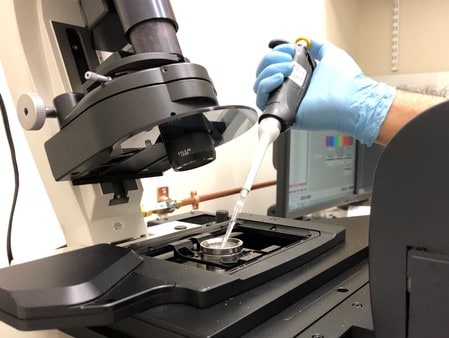By Julie Steenhuysen
CHICAGO (Reuters) – The U.S. investigation into hundreds of cases of life-threatening lung illnesses related to vaping has turned up a curious abnormality: Many of the victims had pockets of oil clogging up cells responsible for removing impurities in the lungs.
Dr. Dana Meaney-Delman, who has been leading the inquiry at the U.S. Centers for Disease Control and Prevention (CDC) in Atlanta, wants to know where that oil came from. The answer will help explain whether these cells play a key role in the vaping-related outbreak that has killed seven people and sickened 530 so far.
It may also reveal whether some of these cases have been occurring all along, undetected.
“We’re looking to partner with any lab that can assist in the identification of what those lipids (fats) are,” Meaney-Delman said in a telephone interview.
A group of researchers who have been studying the long-term effects of vaping told Reuters they have taken up the challenge. They have begun to re-examine lung cell samples they have collected in recent years for evidence of these oil-filled immune cells in people who vaped but didn’t get sick.
One possibility: The deposits are residue from inhaling vaping oils, such as those containing the marijuana ingredient tetrahydrocannabinol (THC) or vitamin E acetate. Both are considered possible contributors to the current illnesses.
Some researchers suspect the oils are formed inside the lungs as part of the body’s natural response to chemicals found in many commercial vaping devices. One theory is that vaping these chemicals may impair the immune system, and make people who vape more vulnerable to respiratory distress, they say.
A study published in the Journal of Clinical Investigation earlier this month has fueled the latter theory.
It found that mice exposed to aerosols of propylene glycol and vegetable glycerin – common solvents used in conventional nicotine vaping devices – developed these same fat-clogged immune cells even though they were never exposed to vaping oils. These mice also had impaired immune systems compared to mice exposed to room air.
ALARM BELLS
The study set off alarm bells for Thomas Eissenberg, co-director of the Center for Tobacco Products at Virginia Commonwealth University. For years, doctors have reported isolated cases of pneumonia-like illnesses in people who vaped. In many cases, patients also had these fat-filled immune cells – called lipid-laden macrophages.
Now, these same abnormalities have been found in mice, and in at least some of the people who have fallen ill recently.
“For me, the implication is there may be some underlying level of disease, like what we’re seeing in this cluster, that’s been going on all along,” Eissenberg said in a phone interview.
Early last week, Eissenberg joined some 25 vaping experts on a hastily arranged conference call. At least three researchers who have already collected lung cell samples from otherwise healthy vapers told Reuters they would see whether these people also had fat-laden pockets within their immune cells. Other researchers, like Eissenberg, are seeking funding to collect new samples of their own.
They want to help determine whether these abnormalities have been present for years, and whether they have made vapers generally more vulnerable to severe disease, possibly triggered by some new vaping substance.
The group’s members say they have been in regular contact with officials at the CDC and the National Institutes of Health on how they can best help with the multistate investigation.
They include Robert Tarran, a physiologist and vaping expert at the University of North Carolina School of Medicine, and Dr. Peter Shields, a lung cancer specialist at The Ohio State University Wexner Medical Center, who has one of the country’s largest sets of lung samples from vapers, smokers and never-smokers.
“It could be that we’ll see something in the general, normal population of people who are using e-cigarettes,” Shields said.
Investigators at the CDC and the U.S. Food and Drug Administration (FDA) have pointed to THC vaping oils or vitamin E, a substance used in some THC products, as a possible cause of these illnesses. But they have not ruled out anything yet, including conventional nicotine liquids.
CDC pathologists are examining hundreds of lung cell samples gathered from patients in the outbreak. Meanwhile, forensic chemists at the FDA are testing more than 150 products to determine whether there is a common ingredient that may help explain the illnesses.
“We need to parlay what we’re seeing in product samples with what we’re seeing in lung tissue,” Meaney-Delman said.
Dr. Laura Crotty Alexander, a lung specialist at the University of California at San Diego, has been studying vaping’s effect on health since 2013. Two years ago, she treated a patient with the same set of symptoms that are now being described across the country, and is now checking her lung cell samples to look for clues.
“It’s possible that everybody who is vaping is at risk,” she said.
(Reporting by Julie Steenhuysen; editing by Michele Gershberg and Jonathan Oatis)


